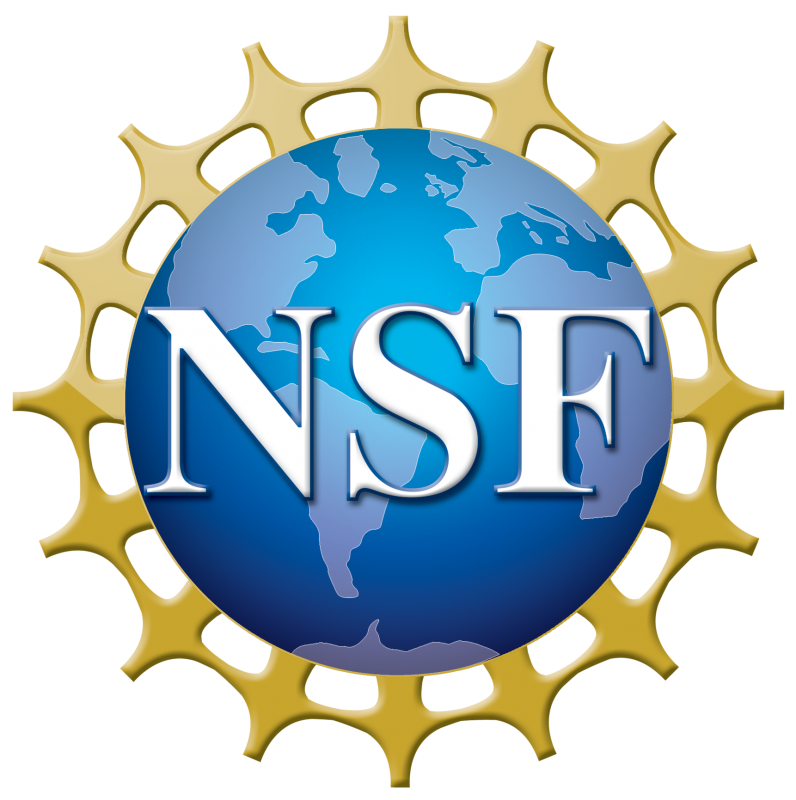Speaker Abstracts
Jo Ellis-Monaghan
Graph Theoretical Models for DNA Self-Assembly
New areas of mathematical investigation arise from determining optimal design strategies for self-assembling DNA nanostructures. Since many 3D target molecules have the underlying structure of graphs, this work draws on graph theory, geometry, knot theory, and combinatorics. Design strategies for the origami method of DNA self-assembly use a single circular (unknotted) strand of DNA called the scaffolding strand that folds into the desired shape and is held in place with short segments of DNA called staple strands. The scaffolding strand must traverse all the edges of the target graph, subject to constraints on how it may pass through the vertices. This leads to questions of computational complexity for routing the scaffolding strand and assuring that resulting configuration is not knotted. We present the necessary formalism for these problems, a selection of recent results, and many open questions.
Lisa Fauci
Explorations in Biofluids: A Tale of Waving and Spinning Tails
In the past decade, the study of the fluid dynamics of swimming organisms has flourished. With the possibility of using fabricated robotic micro swimmers for drug delivery, or harnessing the power of real microbes to transport loads, the need for a full description of flow properties is evident. At a larger scale, the swimming of a simple vertebrate, the lamprey, can shed light on the neuromechanical signaling involved in movement — which has implications in the study of spinal chord injury and regeneration. We will present recent progress in computational modeling of such systems, including sperm motility in the reproductive tract, bacterial transport in porous media and lamprey locomotion.
Laura Landweber
RNA-mediated genome rearrangement in the ciliate Oxytricha
The ciliate Oxytricha trifallax possesses a dynamic pair of genomes, and massive DNA rearrangements produce a highly fragmented but functional somatic macronucleus from a complex germline micronucleus. This process eliminates nearly all noncoding DNA, including transposons, and rearranges over 225,000 short DNA segments to produce a second genome containing thousands of gene-sized "nanochromosomes." In the precursor, germline genome, the shattered segments of different genes often interweave with each other, frequently overlap and sometimes combinatorially assemble (Chen et al. 2014 Cell 158:1187). The mature, somatic genome contains over 16,000 nanochromosomes (Swart et al., 2013 PLoS Biology 11: e1001473). Noncoding RNAs regulate the entire process of genome rearrangement. Millions of 27nt piRNAs provide the critical information to mark and protect the retained DNA segments of the genome (Fang et al., 2012 Cell 151:1243) and a distinct set of piRNAs mark a subset of deleted regions to assist with their elimination. Maternally-inherited, long, non-coding (lnc) RNAs provide three additional layers of continuity across generations, including serving as templates for genome remodeling and RNA-guided DNA repair (Nowacki et al., 2008 Nature 451:153) while also regulating gene dosage and chromosome copy number (Nowacki et al., 2010 PNAS 107:22140). This illustrates the ability of noncoding RNAs to transmit heritable changes to the next generation. Together, Oxytricha's elaborate epigenome, assembled through complex interacting networks of both long and small non-coding RNAs, encapsulates an RNA-driven world, packaged in a modern cell.
Konstantin Mischaikow
The DSGRN Database for Dynamics of Gene Regulatory Networks
A common goal of systems and synthetic biology is to understand the relationship between design and function of gene regulatory networks. The obvious obstruction is that the dynamics and hence the behavior of regulatory network depends on the parameter values (that are typically unknown) at which it is functioning. This in turn implies that to achieve the goal requires understanding the dynamics over large ranges of parameter values.
In this talk I will discuss a novel mathematical framework and its accompanying software, Dynamic Signatures Generated by Regulatory Networks (DSGRN), that given a regulatory network, i.e. a labeled direct graph, provides a description of the global dynamics over all of the associated parameter space. Time permitting I will describe three applications of these ideas:
- The identification of simple network models that robustly perform a given function.
- The design of synthetic networks that perform a given function.
- The rejection of models or reduction of possible parameter regimes based on time series data.
Amy Shaub Maddox
Negative regulation of contractility in dynamic actomyosin rings
Biological active materials are naturally occurring molecular ensembles that transform chemical energy into movement. The actomyosin contractile cortical cytoskeleton is an active material that dictates the dynamics animal cell shape. Early theoretical modeling of the cortical cytoskeleton suggested that it undergoes autocatalysis, and indeed in vitro and in vivo experimental work has provided evidence that contractility feeds back positively on itself. However, the effect of such positive feedback is terminal compaction, and evidence is accumulating that intermediate abundance of structural components is ideal for contractility. Thus, we reasoned that in dynamic cellular processes, contractile autocatalysis must be balanced by time-delayed negative feedback that allows the rebirth of spent cortex. Live cell imaging with unprecedented high temporal resolution, and deep learning-based computer vision, revealed traveling waves of contractility around the cytokinetic ring of mitotically dividing cells. Furthermore, segments of contractile cytoskeleton underwent repeated oscillations of contraction speed. Multiple periodicities of oscillations were super-imposed, suggesting the coexistence of both biochemical and mechanical time-delayed negative feedback. Classification of the contributions of conserved regulatory and structural ring components revealed that cytoskeletal crosslinkers are responsible for faster oscillations, while slower oscillations are either driven by upstream regulators or are inevitable consequences of contractility. The speed oscillations of agent-based simulated contractile rings further suggest that structural remodeling is sufficient to drive negative feedback. Since fluctuations in contractility have also been observed in more specialized cellular behaviors, the oscillations we observe likely reflect an ancient, universal and emergent property of non-muscle actomyosin contractility.
Clayton Shonkwiler
Using Differential Geometry to Model Complex Biopolymers
Practically the simplest possible model of polymers like DNA or proteins is the freely-jointed chain or random walk, which treats the polymer as a chain of independent segments and ignores all forces or volume constraints. Despite its radical simplicity, this model is surprisingly effective at predicting entropy and scaling effects of polymers in certain regimes and serves as a foundation on which more detailed models can be constructed. However, many biopolymers - from bacterial DNA to the cellular cytoskeleton - are topologically non-trivial, and incorporating those constraints into the random walk model destroys the statistical independence of edges, making the model much harder to analyze and simulate. Nonetheless, applying tools from differential geometry has led to dramatic recent progress in understanding these topologically-constrained random walks, yielding both new mathematics and new tools for understanding biopolymers and synthetic topological polymers.
Caroline Uhler
From Single Cell Measurements to Computational Models of Gene Networks and 3D DNA Organization
Although the genetic information in each cell within an organism is almost identical, gene expression varies widely between different cell types. The spatial organization of the genome represents an important epigenetic regulator and alterations thereof are associated with various diseases. I will analyze the link between the 3D genome organization and gene regulation at the single-cell level by combining sequencing data (drop-seq, perturb-seq, Hi-C) with imaging data (3d FISH) and modeling (causal inference and geometric packing models). In particular, I will propose a new chromosome packing model that links the mechanical state of a cell with gene expression via functional gene clusters in the chromosome intermingling regions. In addition, I will discuss causal inference algorithms for learning gene regulatory networks by taking advantage of the high-throughput interventional single-cell RNA-seq data that is currently being produced. I will end by discussing a machine learning pipeline for detecting changes in genome packing at the single-cell level as a biomarker for early cancer diagnostics. Collectively, our studies provide important insights into the spatial control of genetic information for cellular differentiation and reprogramming.


